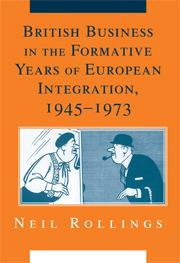1 - Introduction
Published online by Cambridge University Press: 02 December 2009
Summary
In March 1957, six countries – Belgium, France, West Germany, Italy, Luxemburg, and the Netherlands – signed the Treaty of Rome that created the European Community (EC). Half a century later, the European Union (EU), as it is now known, consisting of twenty-seven countries with a total population of more than 450 million, covers Central and Eastern Europe as well as Western Europe and is likely to grow even larger in the near future. In 2004, if one includes intra-EU trade, the then twenty-five-member EU constituted 42 percent of the world's merchandise exports and 52 percent of the world's commercial services exports. It is no understatement to say that European integration has changed the lives of millions of people, and not just those in Europe. It is the largest trading partner for many nations in the world, including the newly industrialized economies of China and India, and is the source of half of the foreign profits of corporate America. Indeed, it is popularly presented as a competitor or alternative model to the United States. That it is common to refer to “Europe” in this context as a single entity well illustrates the impact of European integration. There are many regional free trade areas in the world today, but none have taken the extra step of creating supranational institutions to which national governments have handed over sovereignty, as has happened in the EC.
- Type
- Chapter
- Information
- Publisher: Cambridge University PressPrint publication year: 2007



